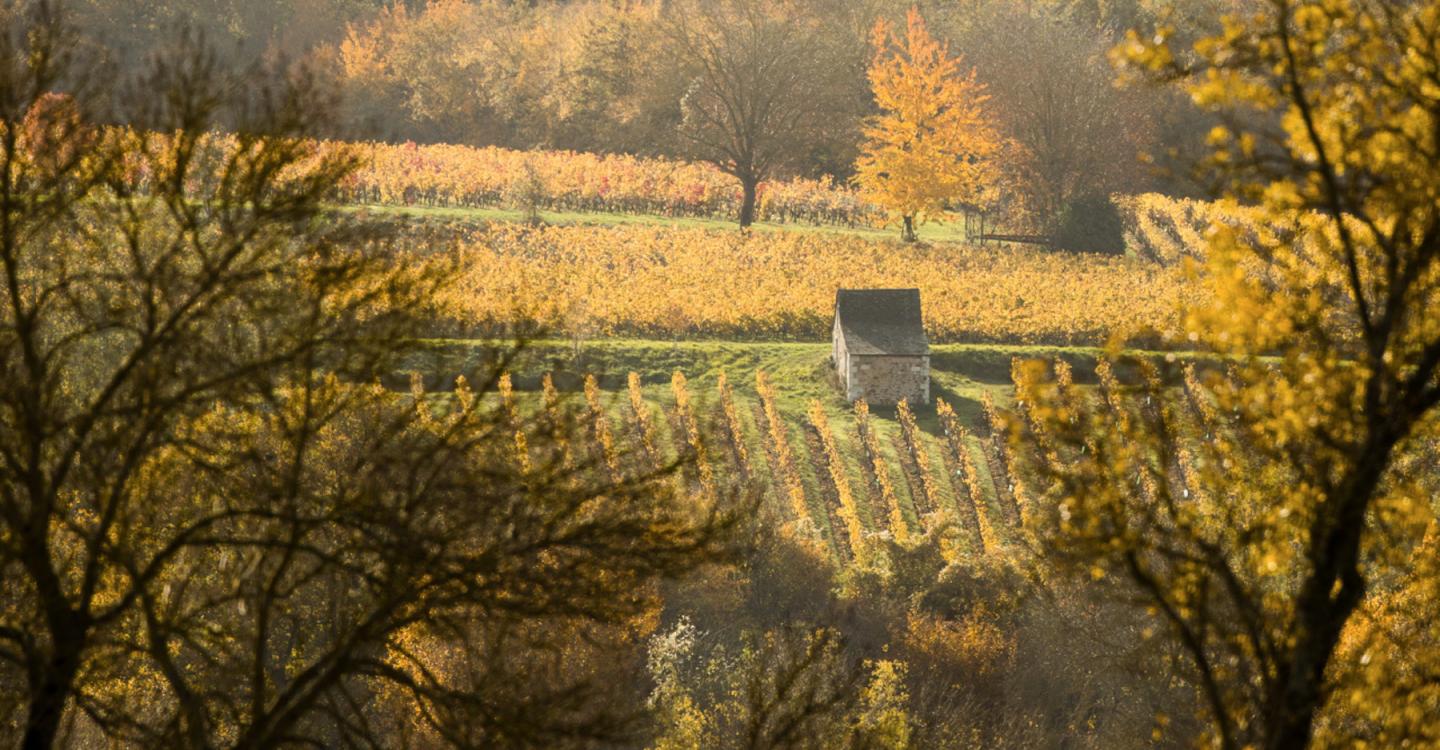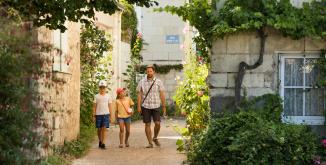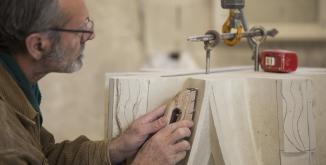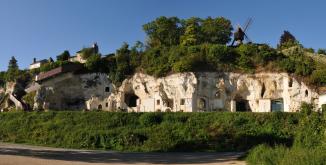Out in the vineyards, the vineyard shelters recall the wine growers’ labour and their well-deserved breaks in the shed of those small rustic buildings. But physical work was not only for men. In the 19th century, women met at the wash-house both for laundry and chatting.
The strong wind invites millers into the Loire valley. They build wind mills all over the region amongst which one kind is typical of Anjou: the “moulin-cavier”. The millstones are installed underground. The cone-shaped tower made of stones tops a wooden cabin. This shape is typical of the Anjou valley and can mainly be found on the hillsides and plateaus around Saumur, but also on the right bank of the Loire from the region of Touraine all the way to Angers, and in the Vienne valley as well as near Doué-la-Fontaine.
The former milling activity no longer exists, but the production of dried fruits has not completely disappeared. In Rivarennes, the crafting of dried fruit still continues using ancient techniques. Only the prune of Tours has not been produced in a long time, not even in Huismes where it initially came from.
Some other installations also witness old agricultural techniques, such as the hemp ovens and the tabaco hangars. In the 19th century, the cultivation of hemp has made the region very rich. Hemp is the raw material for the fabrication of sailcloth and ropes. But the decline of the Loire navy also means the decline of the hemp plantations. As for tabaco, cultivation starts after the Second World War and disappears 30 years later. During this short period of time, the Loire valley had become one of the main producers in France.
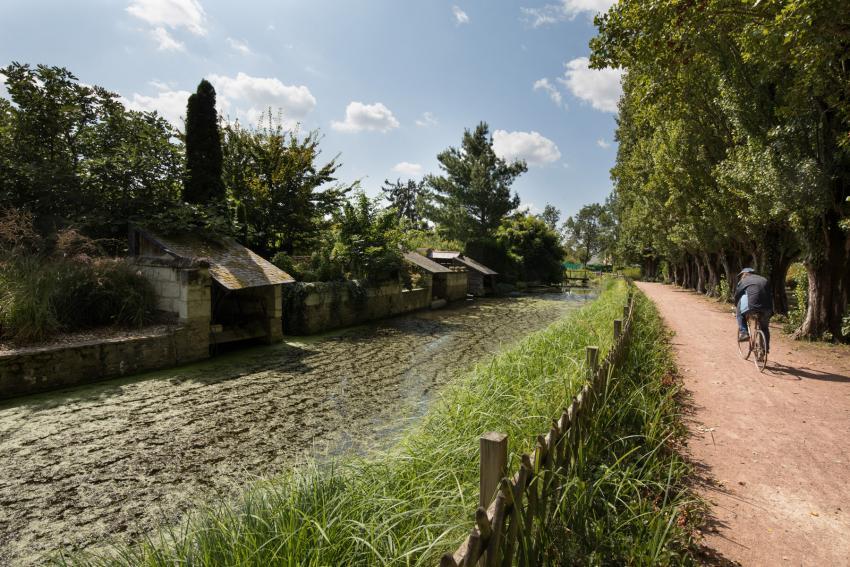
Vineyard shelters and garden houses
Small shelters are typical of the Park’s vineyard landscape. They were used to store tools and give shelter to the wine grower during a break. We don’t exactly know when the first ones were built. Most of the vineyard shelters you can still admire today date back to the 19th century, but the oldest known in the Park area in Beaumont-en-Véron might have been built in the 17th century. Elsewhere, dolmens were also used as shelter, even if this is of course not their primary function. Alas, it is difficult to say when this repurposing has first occurred …
Garden houses are tiny buildings with a slate roof and a chimney allowing the wine grower to warm up his meal. A metal ring on the outside wall was used for tying a horse. The Loire-Anjou-Touraine Park has set different actions to restore this small rural heritage over the past few years.
These charming little houses are part of the heritage of the area around Beaufort-en-Vallée, in the North western part of the Park, ever since the development of horticulture. They have the looks of little pavilions. For the façades, builders use bricks and tufa. The roofs are decorated with small dormers and sometimes even girandoles or zinc wind vanes. Unfortunately, many of these garden houses are abandoned today, likely to be destroyed.
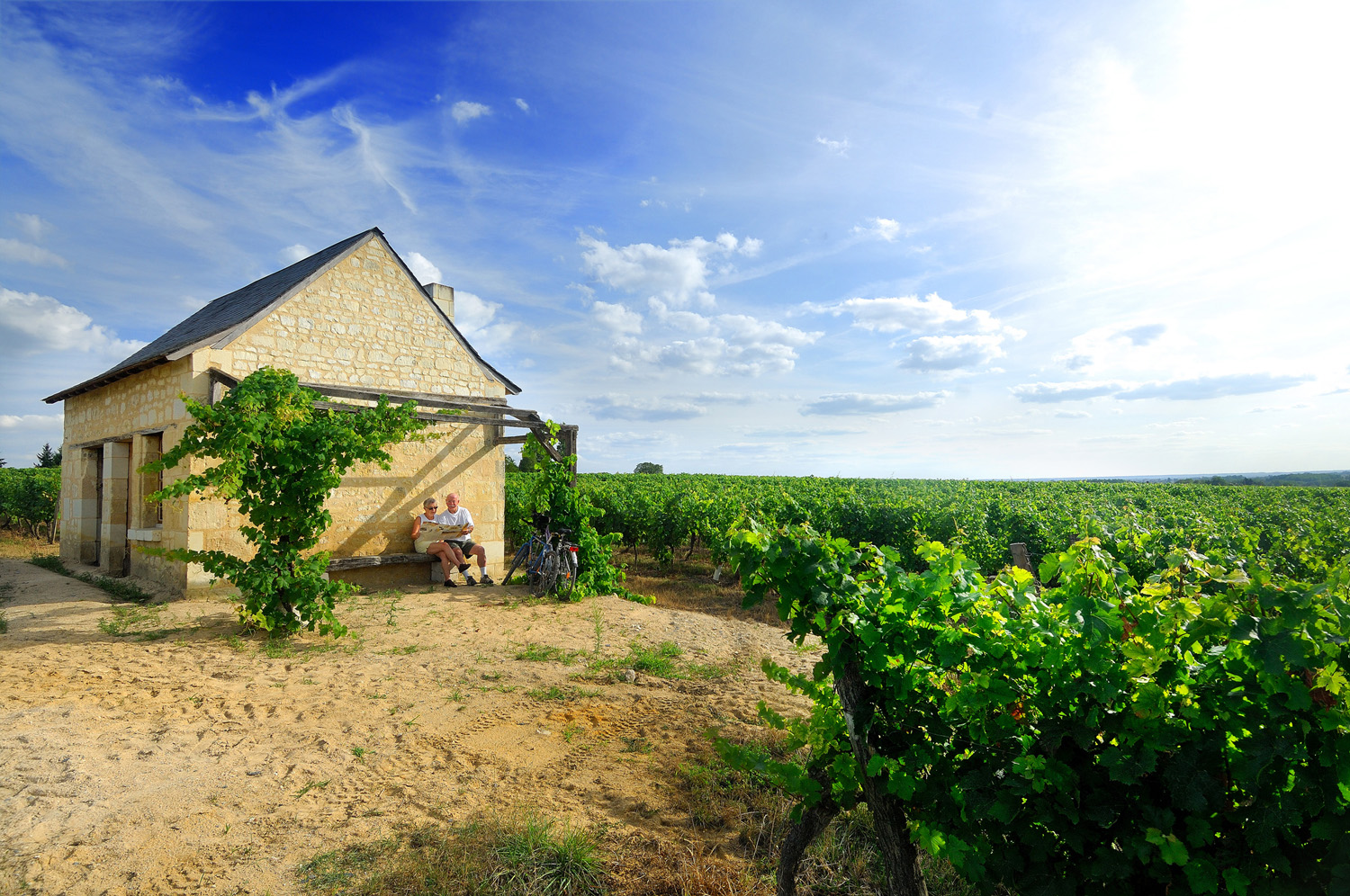
Wash-houses - social life centres
The “lavoirs” (wash-houses) can be found close to watercourses or next to fountains. It was were women came together and socialised. They actually met there to rinse their laundry which had already been washed or steamed at home or in shared laundry rooms. Rinsing needed a lot of running water. So, the washerwomen came to the wash-houses or sometimes met at the riverside: a lot of old postcards show them standing and rinsing laundry in the Vienne or Loire rivers.
Most of the wash-houses developed in the 19th century, when the benefits of hygiene started to spread. “Lavoirs” are open buildings or have a simple canopy. Most of them are made of stone or wood with a tiled floor or a slab, a single pitched roof made of slate or tiles and sometimes even with a chimney to heat water. Inside, the washerwomen kneel on a cousin to beat the linen on sloping slabs.
The wash-houses still remaining today all date back to the 19th or early 20th centuries. Some are different from the others: the wash-house of Moncrate in La Tour-Saint-Gelin is polygonal; the Philberdière in Restigné has a 18-metres-long front. In the village of Longué, a theme walk along the Lathan riverbanks invites you to discover not less than 20 remaining private wash-houses.
On the two main rivers of the Park area – the Loire and the Vienne – there were even so-called wash-boats. The laundry was beaten on the lower level and then dried on the upper level.
Post mills et windmills “cavier”
Wheat was one of the main cereal productions in the 18th and 19th centuries. Its flour is used for making bread and porridge, both basic food for the population. In the Loire valley, millers benefit from North-west wind (the so-called “vent de galerne”). Windmills are part of the landscape of the Loire and their remains can be found all over the Park territory.
The post mill was the first kind of mill to appear in the 15th century. It can easily be recognised by its large upright wooden post on which the body of the mill is balanced. In the Park area, only the mill Goislard is still standing. It was built in Saint-Mathurin-sur-Loire in the early 19th century before being bought and moved to La Ménitré more than one hundred kilometres away from its initial spot. The corps collapsed during moving, but the mill is faithfully rebuilt some years later.
The windmills “cavier” are typical of Anjou and more precisely the Saumur area. They have a special kind of morphology, comprising three main parts:
- “la masse”: the body, a massif stone basement structure with an arched room for the millstones. This structure looks like a cave; it can also be underground when it is built in a troglodytic environment. This is where the name “cave mill” comes from.
- “le massereau”: a stone built conic level set upon the basement.
- “la hucherolle”: the cap of the mill. This mobile cabin carries the mill’s sails and is linked to the “massereau” with a wooden pivot.
- The pivot links the mechanism of the cap to the mill machinery.
You can still find various remains and restored mills on the Park territory. The mills of Turquant, Montsoreau, Varennes-sur-Loire and Bourgueil are particularly well preserved.
Dried fruits and prunes of Tours
The “fruits tapes” (dried fruits) are a local delicacy. The production of apples in Turquant (Anjou) and pears in Rivarennes (Touraine) date back to the 18th century. They are peeled and baked in an oven before being dried on a wicker rack and regularly and delicately flattened by a hammer (a so-called “platissoire”). You have to rehydrate them in water or wine before tasting.
This drying method allows the conservation of the fruits, for example during long journeys on a boat where they helped to vary the diet of sailors and prevent from scurvy.
After the phylloxera decease, wine-growers of the late 19th century turned to the production of dried fruits which reaches its apogee at this period. In Turquant, there were more than 200 apple ovens just before the First World War. As the vineyards recover over the years, fruit conservation methods also improve. This is the beginning of the end of a large production of drier fruits. In the 1980s, two ovens in Turquand and Rivarennes are reopened and still exist, producing hand-crafted dried fruits.
It was in Huismes, where the famous (and misnamed) “prunes of Tours” used to be produced. Prunes of the so-called Sainte-Catherine’s variety were heated in ovens five or six times in a row to chase humidity. During the last turn of heating, the steam condensates into a thin white layer, which makes the difference between the prunes of Tours and Agen. These fruits used to be very appreciated, but saw their production decline after the First World War. You can still see the remains of two former ovens in the rue de la Chancellerie.
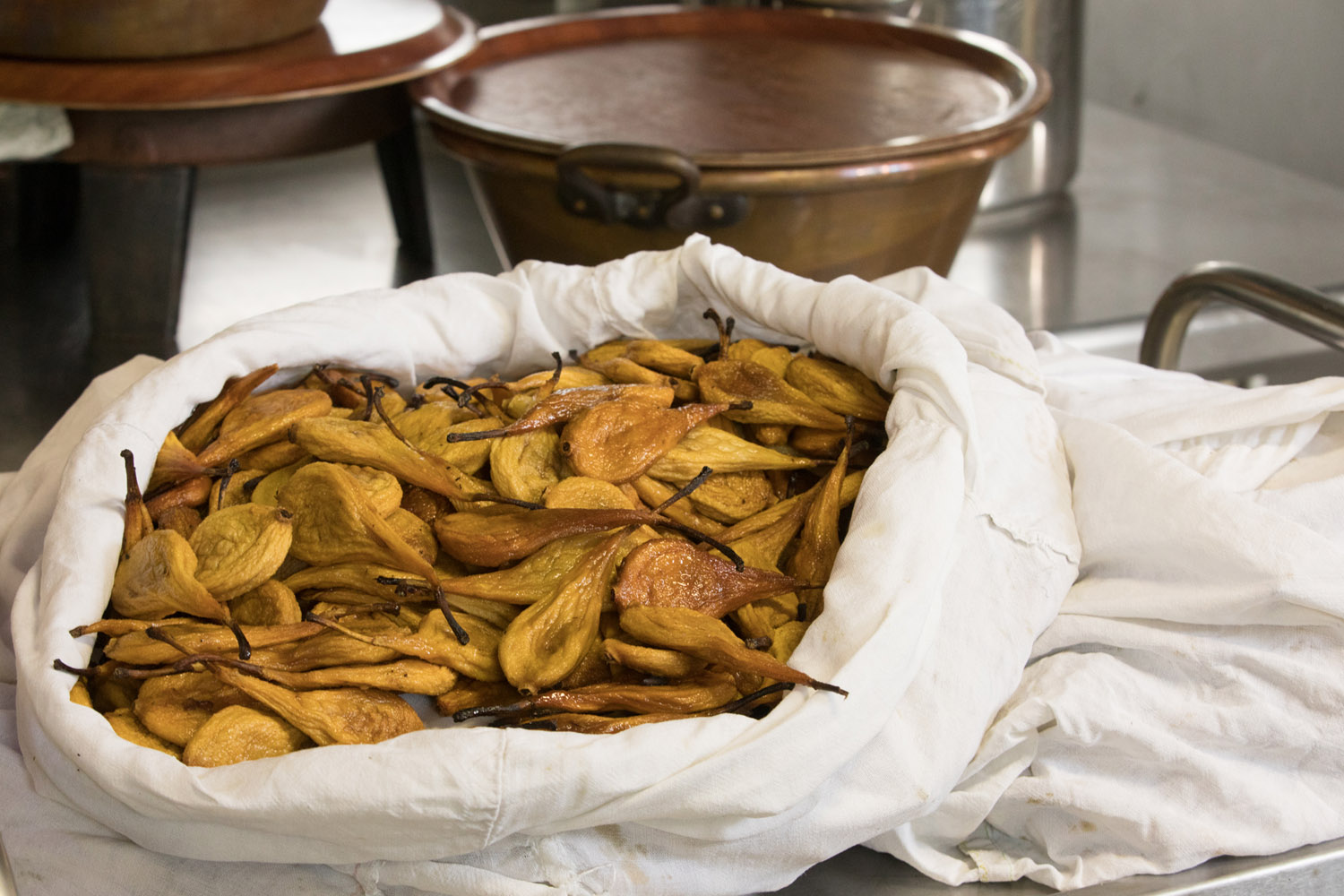
Hemp ovens and tabaco barns
The cultivation of hemp in the region dates back to a long time and used to be a lighthouse activity, especially between Bréhémont (in Touraine) and La Daguenière (in Anjou). In Beaufort-en-Vallée, hemp growing was first recorded in the 15th century; but the production reaches its full swing in the 18th and 19th centuries with the arrival of a sailcloth and rope manufacturing company in 1748. The factory supplies sailcloth to the Royal Navy and other ships owners. The company closes in the late 19th century, but the hemp cultivations carries on: the hemp fields of the valley supply raw material to other cloth factories of the region; the Bessonneau factories in Angers for example have dominated the industrial landscape up to the 1950s. However, the declining activities of the Loire Navy after the Industrial Revolution as well as the arrival of new textile fabrics eventually stops the hemp production, which is little by little replaced by other cultures.
Hemp is retted before being weaved: it soaks in water during 10 days in order to remove the fibbers before drying them in an oven at 70°C during a long time and finally grind them. After this step, scutching separates what can be spun from the rest before all of it is packed in ballots. Today, the most impressive and accessible hemp ovens can be found on the Île Saint-Martin, between Ussé and Huismes.
And last but not least, the cultivation of tabaco used to be another specificity of the Anjou and Touraine regions. It is developed after the Second World War. In the 1950s, the Maine-et-Loire department is the leading tabaco producer in the West of France. But this activity shouldn’t last very long: it disappears in the 1980s. Out in the fields in Huismes or in Saché in Touraine, you can still see wooden barns, which were used for drying tabaco, here and there.

